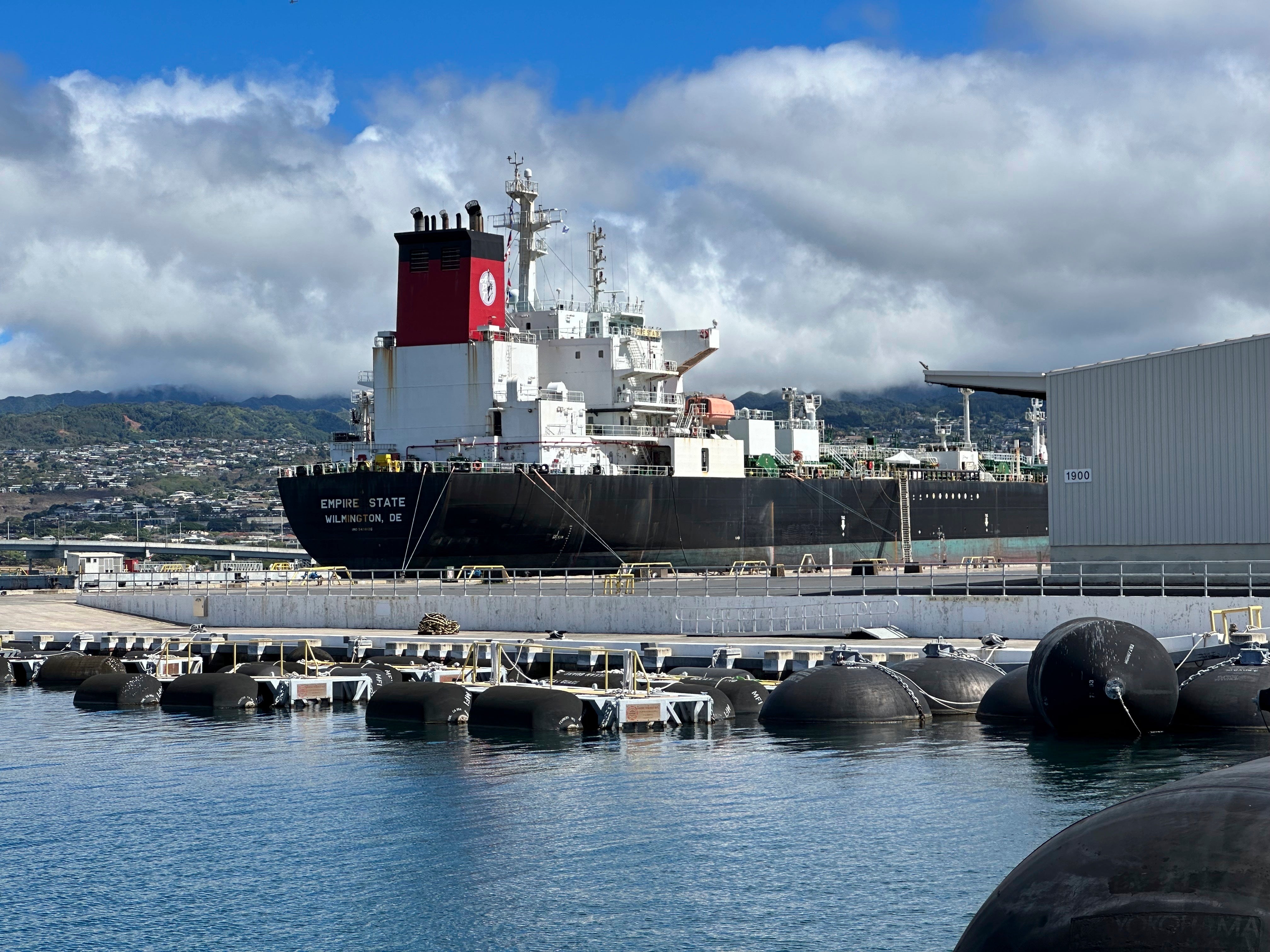US military to begin draining leaky fuel tank facility that poisoned Pearl Harbor drinking water
Next week the U.S. military plans to begin draining fuel from World War II-era underground fuel tanks in Hawaii

Your support helps us to tell the story
From reproductive rights to climate change to Big Tech, The Independent is on the ground when the story is developing. Whether it's investigating the financials of Elon Musk's pro-Trump PAC or producing our latest documentary, 'The A Word', which shines a light on the American women fighting for reproductive rights, we know how important it is to parse out the facts from the messaging.
At such a critical moment in US history, we need reporters on the ground. Your donation allows us to keep sending journalists to speak to both sides of the story.
The Independent is trusted by Americans across the entire political spectrum. And unlike many other quality news outlets, we choose not to lock Americans out of our reporting and analysis with paywalls. We believe quality journalism should be available to everyone, paid for by those who can afford it.
Your support makes all the difference.The military next week plans to begin draining fuel from World War II-era underground fuel tanks in Hawaii, nearly two years after the massive facility sickened 6,000 people when it leaked jet fuel into a Pearl Harbor drinking water well.
Removing the fuel is a key step toward shutting down the Red Hill Bulk Fuel Storage Facility as demanded by the state of Hawaii. The November 2021 spill poisoned the Navy's water system serving 93,000 people in and around Joint Base Pearl Harbor-Hickam. The leak continues to threaten an aquifer used by Honolulu's municipal water utility to serve 400,000 people on Oahu.
“I want the community to know that my team and I understand the enormity and the significance of this mission,” Vice Admiral John Wade, the commander of Joint Task Force-Red Hill, said at a news conference.
Work to drain the 104 million gallons (394 million liters) remaining in the tanks was scheduled to begin on Monday.
Each tank is 250 feet (76 meters) tall and 100 feet (30 meters) wide. Gravity will feed fuel into fuel lines connected to the lower part of the tanks. The fuel will then flow downhill through pipelines for 3 miles (4.8 kilometers) to a tanker ship waiting at Pearl Harbor pier. It will take more than two days to fill each tanker.
Wade said it would take three months to remove 99.9% of the fuel. Then, work will begin to remove a residual amount of an estimated 60,000 to 70,000 gallons that will have accumulated in low-point drains and bends. That work is expected to be finished in the spring.
The moment is bittersweet for Lacey Quintero, whose Navy family was among the thousands who suffered health problems after drinking contaminated water in 2021. She's happy the fuel is being removed but the operation has stirred memories as the two-year anniversary of the spill approaches.
“The timing of it, coupled with the dangers that are present during defueling — there’s fear,” she said.
She's concerned that more fuel could spill into the Navy's drinking water well and poison the aquifer. She's also worried about possible explosions.
Quintero and her husband, who is in the Navy, and their two children moved to Hawaii in November 2021 from California. They fell sick soon after moving. Her youngest, who was then 3 years old, vomited uncontrollably. The entire family complained of diarrhea and itchy skin. Quintero's arms and legs went numb and she struggled with chronic fatigue.
Her husband is still stationed in Hawaii but they have moved to private housing off base which uses Honolulu municipal water. Yet she still suffers from stomach pains, migraines and skin issues. She has PTSD.
“I have flashbacks of feeding my daughter this poison soup and watching her vomit it up,” she said.
Quintero is one of 6,750 claimants seeking compensation from the U.S. government for what they experienced. Their attorney, Kristina Baehr, said claims for the first group of six plaintiffs were due to go trial in March.
The state of Hawaii ordered the military to drain the tanks after the 2021 spill, saying they posed an imminent threat to the aquifer underneath. The Department of Defense challenged that order in court, but eventually acquiesced. It's spent the past year repairing the tanks and pipes so the fuel can be safely removed without additional leaks.
For years the military said the tanks were vital to national security and resisted calls to close the facility or to move it. Military officials repeatedly reassured the public that Oahu's water was safe — even though the tanks had a history of leaks.
The spill upset a broad cross-spectrum of Hawaii, and precipitated a crisis for the military in the islands. Many Native Hawaiians have been angered given the centrality of water in Hawaii’s Indigenous traditions.
A Navy investigation pinned the cause of the spill on a series of mistakes.
First, operator error caused a pipe to rupture on May 6, 2021, when fuel was being transferred between tanks. This caused 21,000 gallons (80,000 liters) of fuel to spill. Most of it flowed into a fire suppression line and sat there for six months, causing the line to sag.
Then on Nov. 20, a cart rammed into the sagging line, releasing 20,000 gallons (75,700 liters.) A team thought they recovered all of this fuel, but they missed about 5,000 gallons (19,000 liters) which flowed into a French drain and from there into the drinking water well.
The Navy reprimanded three now-retired military officers for their roles in the spill but didn't fire nor suspend anybody.